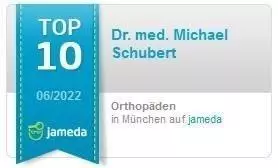Herniated discs, often a painful and debilitating diagnosis, can significantly impair quality of life. In recent years, minimally invasive techniques such as percutaneous nucleotomy have increasingly become the focus of orthopedic surgery. These modern treatment approaches allow for effective pain reduction and improved quality of life without the need for extensive surgery. The Apex-Spine Spine Clinic in Munich has established itself as a pioneer in the application of such innovative procedures and offers patients customized solutions.
Minimally invasive spine surgery
Minimally invasive spine surgery encompasses a variety of procedures aimed at minimizing the size of the procedure, reducing tissue damage, and accelerating recovery. Unlike traditional open surgeries, which require large incisions, minimally invasive techniques can often be performed through small openings in the skin. The most well-known procedures include percutaneous nucleotomy, percutaneous discectomy, and endoscopic discectomy.
Percutaneous nucleotomy and discectomy
Percutaneous disc surgery is an umbrella term that encompasses various minimally invasive spinal procedures. This is usually performed under local anesthesia, which relieves both stress and physical strain on patients.
Percutaneous nucleotomy is a specific procedure used primarily for symptomatic disc herniations. A small incision is created into the disc, through which a special needle is inserted into the injured area. This needle is used to partially remove the diseased nucleus pulposus—the inner part of the disc—to relieve pressure on the nerve root and effectively relieve pain.
Percutaneous discectomy, on the other hand, involves the removal of disc tissue using a minimally invasive approach and is often used in more complex cases. This method also allows for the surrounding tissue to be preserved, significantly shortening recovery time.
Microscopic vs. endoscopic procedures
An important aspect in the discussion of minimally invasive techniques is the difference between microscopic and endoscopic procedures. Microscopic methods are typically performed using a special magnifying glass or microscope, providing a comprehensive view of the surgical area, but often require greater access to the body.
Endoscopic procedures, such as those used at the Apex Spine Clinic, are different. Here, a small camera equipped with a light source is inserted into the body. This allows for precise visualization of the spine without the need for significant incisions. These methods are not only gentle on the surrounding tissue, they also enable faster postoperative recovery, less postoperative pain, and a lower rate of complications.
Advantages of percutaneous nucleotomy and minimally invasive technique
The benefits of percutaneous nucleotomy are manifold and have a direct impact on the quality of life of patients:
- Pain relief: Removal of the diseased disc tissue can lead to a significant reduction in pain. Patients often report immediate improvement in their symptoms.
- Shorter recovery time: Because the procedures are minimally invasive, patients can usually be discharged home the same day and often only need a few days for full recovery.
- Fewer postoperative complications: Because the procedures are performed under local anesthesia and without large incisions, the risks of infection and other complications are significantly lower.
- Maintaining mobility: Patients can often quickly return to their daily activities, significantly improving their quality of life.
The Apex-Spine Clinic: Expertise and Specialization
The Apex Spine Clinic in Munich specializes in high-quality, minimally invasive treatments for spinal disorders. With a team of experienced orthopedic and spinal surgeons, the clinic utilizes state-of-the-art technologies and procedures to develop individualized treatment plans.
The clinic's exceptional expertise and decades of experience in percutaneous nucleotomy and other minimally invasive procedures have contributed to elevating patient care to a new level. All procedures are performed under local anesthesia to treat patients as gently as possible and avoid the risks of general anesthesia.

